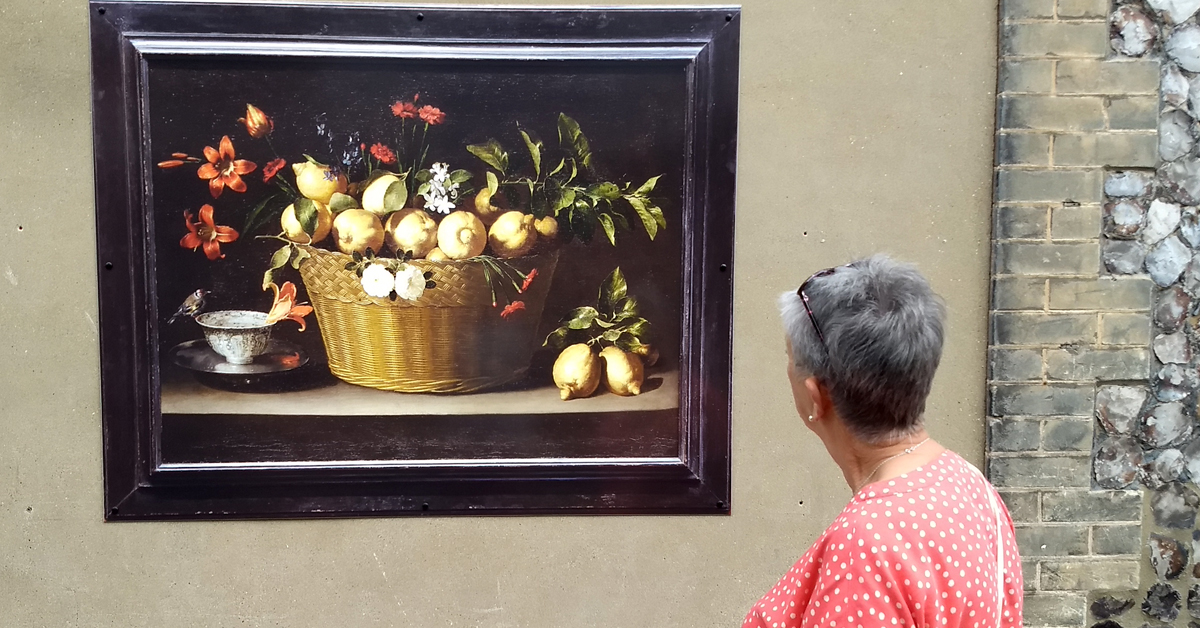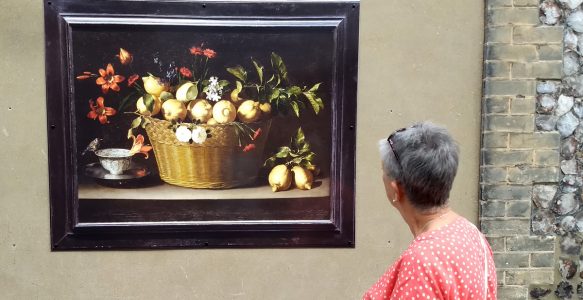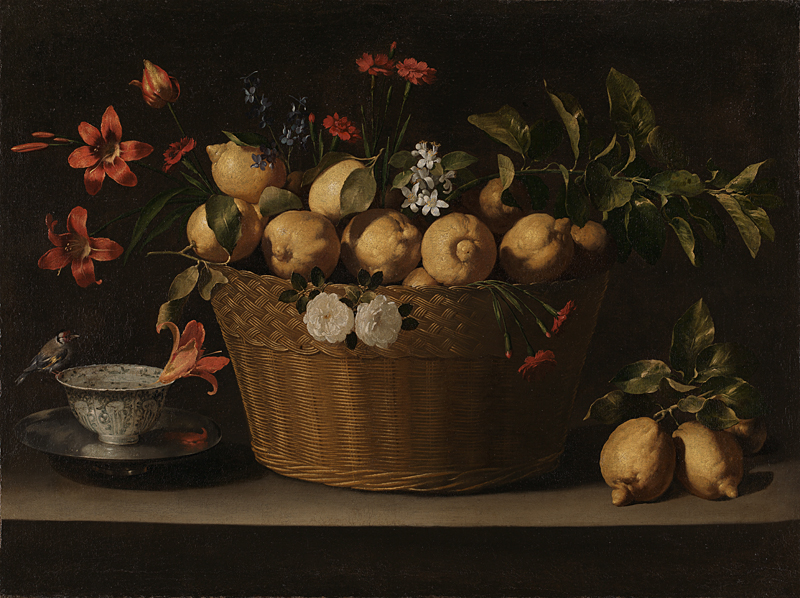Still Life of Lemons can be found on West Street outside Betfreds opposite Lizzie’s
Still Life of Lemons, Day Lilies, Carnations, Roses and a Lemon Blossom in a Wicker Basket, together with a Goldfinch perched on a Porcelain Bowl of Water, on top of a Silver Tray, all arranged upon a Stone Ledge, about 1643-9
Juan de Zurbarán
Oil on canvas, 81.4 × 108.5 cm
A wicker basket is piled high with fresh lemons, seemingly just picked from a tree, their leaves still attached. Sprigs of flowers – lemon blossom, red carnations, blue delphiniums, white roses, day lilies and a tulip – are scattered throughout the composition.
A goldfinch perches on the edge of a delicate porcelain bowl filled with water, and a single lily floats on the surface. These are almost certainly intended to be symbolic: the water and lily refer to the purity of the Virgin Mary, and the goldfinch is often associated with Christ’s Passion (his torture and crucifixion) and sacrifice.
Read more at NationalGallery.org.uk
Juan de Zurbarán
Born in Llerena, 80 miles north of Seville, Juan was the son of the painter Francisco de Zurbarán, with whom he trained. Around 1629, when Juan was about nine years old, the family moved to Seville, where his father dominated the artistic scene until the mid-17th century. In 1641 Juan married Mariana de Quadros, the wealthy daughter of a procurator in the Real Audiencia of Seville, which brought him a considerable dowry and resulted in two children (born in 1642 and 1644). Tragically, Juan’s life and career came to an abrupt end: he died in 1649 at the age of just twenty-nine, a victim of the plague epidemic that hit Seville, wiping out almost half of the city’s population.
Read more at NationalGallery.org.uk



